Sugar gliders, native to Australia and New Guinea, have soared in popularity as pets, offering a unique blend of playfulness and affection. However, aspiring and current owners often face challenges due to the specialized care these marsupials require.
In this guide, we delve into the fascinating world of sugar gliders. Did you know that sugar gliders can glide up to 50 meters in the wild? This remarkable ability is just one of the many fascinating aspects we’ll explore.
We’ll take you on an in-depth look at the joys and responsibilities of owning a sugar glider, guiding you with expert advice and detailed insights.
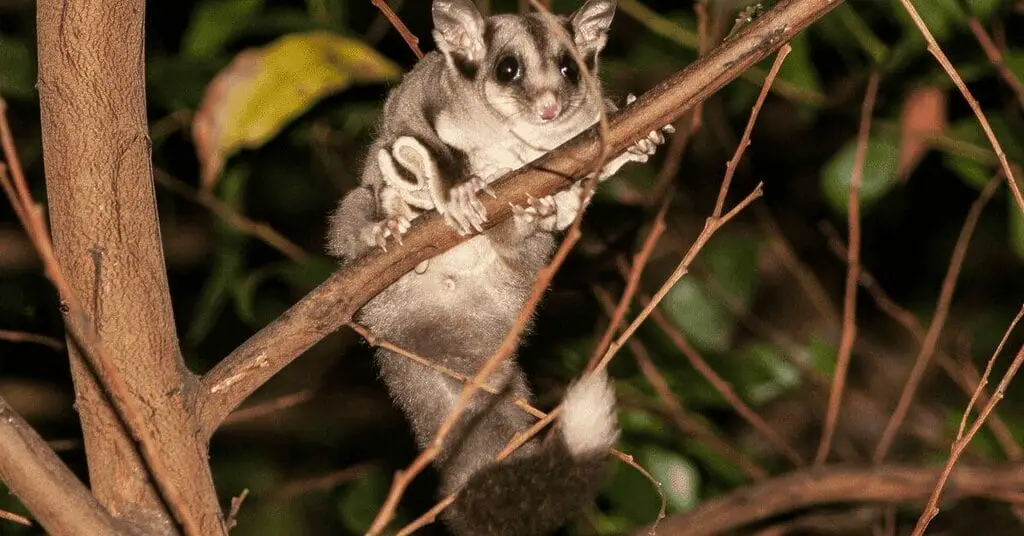
What are Sugar Gliders?
Sugar gliders (Petaurus breviceps) are small, nocturnal marsupials native to Australia, and New Guinea. They’re named for their diet preference of sugary foods like nectar and sap and their unique ability to glide through the air.
Sugar gliders are increasingly popular as exotic pets due to their social nature and bond-forming capabilities with humans.
They are part of the same family as kangaroos and koalas and are similar in size to a squirrel. They have a distinctive membrane, called a patagium, which stretches from their forelegs to hind legs, enabling them to glide distances of up to 50 meters. This gliding ability is an adaptation for moving between trees in their arboreal habitat.
In captivity, they require a specific diet, including fruits, vegetables, and protein sources, to replicate their natural diet. Their social nature means they thrive in groups and can form strong bonds with their human caregivers, requiring regular interaction and engagement.
As nocturnal animals, sugar gliders are most active during the night. They communicate through a range of vocalizations and are known for their curiosity and playful behavior.
Potential owners should be aware that sugar gliders require a significant commitment in terms of time, diet management, and social interaction to ensure their well-being in a domestic setting.
Basic Care for Sugar Gliders
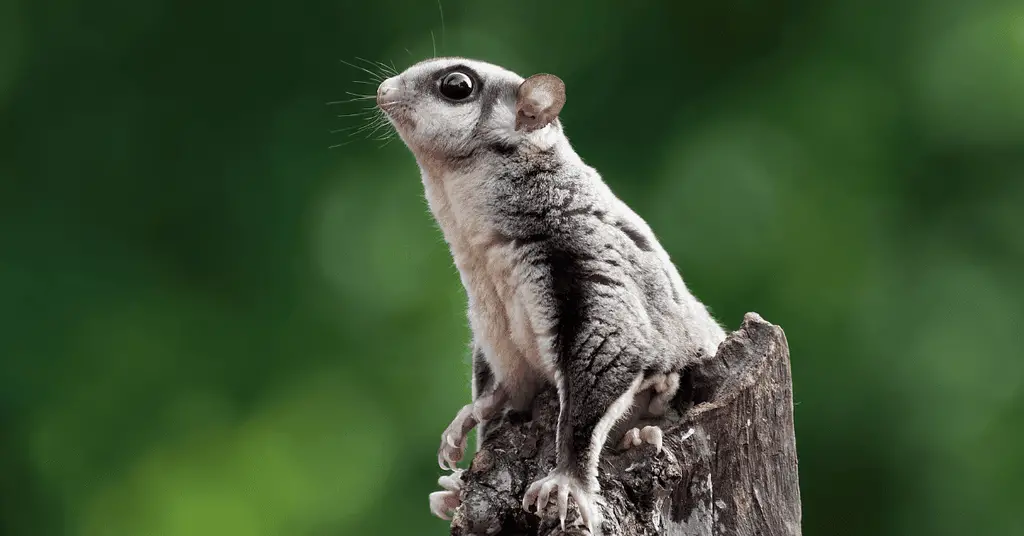
Transitioning from understanding what sugar gliders are, it’s crucial to focus on their basic care essentials. Proper care is fundamental to ensure the health and happiness of these unique pets.
Essentials of Sugar Glider Care
- Diet: Sugar gliders require a balanced diet consisting of fruits, vegetables, protein sources, and a calcium-to-phosphorus ratio to avoid nutritional deficiencies. A combination of commercial sugar glider food, fresh produce, and occasional treats is recommended.
- Habitat: They need a spacious, vertical cage to accommodate their gliding behavior. The enclosure should be equipped with branches or shelves for climbing and nesting boxes for sleeping.
- Environmental Enrichment: Toys, ropes, and swings can keep them entertained and promote physical activity. Sugar gliders also enjoy pouches or hammocks to rest in.
- Social Interaction: Being highly social animals, they thrive in pairs or groups and require daily interaction with their owners. Lack of social interaction can lead to depression and behavioral issues.
- Healthcare: Regular veterinary check-ups are important to monitor their health. Sugar gliders are prone to stress-related issues, so maintaining a stable environment is key.
- Handling and Bonding: Gentle handling and bonding pouches can help in developing trust with your sugar glider. However, patience is essential as this process can take time.
For a more detailed guide on caring for your sugar glider, refer to How to Care for a Sugar Glider. This resource provides in-depth information to help you create a nurturing and suitable environment for your sugar glider.
Dietary Needs of Sugar Gliders
Moving onto a critical aspect of sugar glider care, their dietary needs must be carefully managed to ensure optimal health. A well-balanced diet is key to preventing nutritional deficiencies and promoting longevity in these marsupials.
What Sugar Gliders Eat
- Natural Diet: In the wild, sugar gliders primarily consume nectar, tree sap, insects, and small vertebrates. This diet is rich in both carbohydrates and protein.
- Fruits and Vegetables: In captivity, their diet should include a variety of fresh fruits and vegetables. Safe options include apples, grapes, carrots, and greens. It’s important to avoid fruits high in oxalates, like spinach, which can lead to health issues.
- Protein Sources: Protein can be provided through cooked lean meats, boiled eggs, and small amounts of yogurt. Specialized sugar glider pellets are also available, which can help in meeting their nutritional needs.
- Supplements: Calcium and vitamin supplements are often necessary to balance the calcium-to-phosphorus ratio in their diet, crucial for preventing metabolic bone disease.
- Water: Freshwater should always be available. Sugar gliders can become dehydrated quickly, especially if their diet is primarily dry food.
- Foods to Avoid: Some foods are toxic to sugar gliders, including chocolate, caffeine, and anything high in fat, sugar, or preservatives.
For a comprehensive list of what to feed your sugar glider and how to maintain a balanced diet, visit What Do Sugar Gliders Eat?. This resource offers detailed guidance on creating a nutritious diet plan that caters to the unique needs of sugar gliders.
Training and Behavior of Sugar Gliders
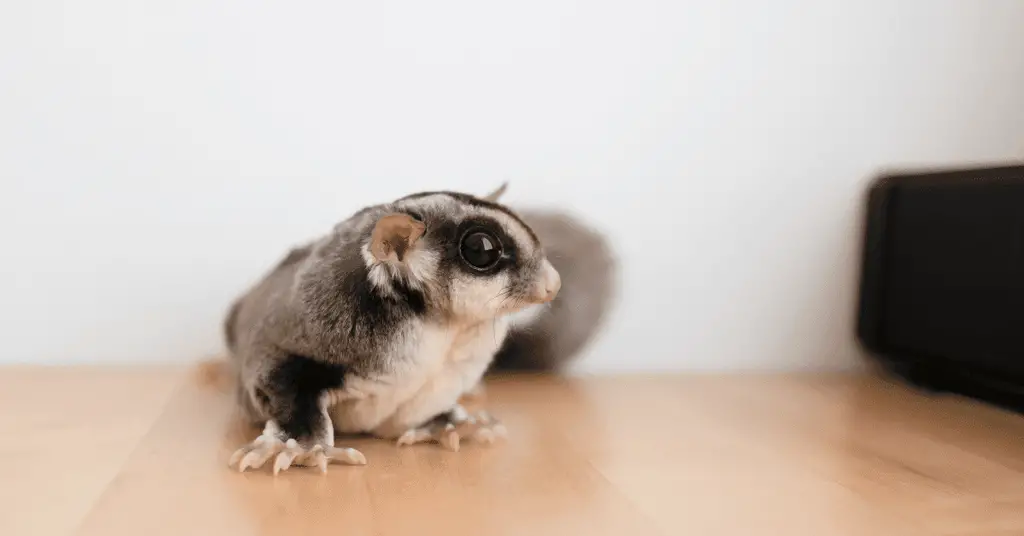
Advancing to another vital aspect of sugar glider care, understanding and training your sugar glider is essential for a harmonious pet-owner relationship. These intelligent creatures can learn various behaviors and commands, but this requires patience and consistency.
Understanding Sugar Glider Behavior
- Nocturnal Nature: Sugar gliders are active at night. Understanding their sleep-wake cycle is crucial for effective interaction and training.
- Vocalizations: They communicate through various sounds, each indicating different needs or emotions. Recognizing these can help you respond appropriately to their needs.
- Social Behavior: Sugar gliders are highly social and need regular interaction. Lack of social engagement can lead to stress and behavioral issues.
Training Your Sugar Glider
- Potty Training: With patience, sugar gliders can be trained to use a designated area for elimination. This requires consistency and positive reinforcement.
- Handling: Gradual and gentle handling helps in building trust. Start with short sessions and gradually increase the duration.
- Trick Training: Sugar gliders can learn simple tricks like coming when called. Use treats as rewards for positive reinforcement.
These resources will provide you with detailed strategies and tips to effectively train and understand your sugar glider, ensuring a well-adjusted and happy pet.
Bonding with Your Sugar Glider
Now, let’s focus on the heartwarming aspect of owning a sugar glider: bonding. Establishing a bond with your sugar glider is a fulfilling part of the pet-owner experience, fostering trust and companionship.
How Sugar Gliders Bond with Their Owners
- Time and Patience: Bonding with a sugar glider often requires time and patience. Regular, gentle interaction can foster trust.
- Scent Familiarization: Sugar gliders rely heavily on their sense of smell to recognize people. Carrying a cloth with your scent or wearing a bonding pouch can help your sugar glider become accustomed to you.
- Consistent Handling: Gently handling your sugar glider daily helps in building a bond. Be mindful of their mood and energy levels to ensure positive interactions.
- Feeding: Hand-feeding treats can also aid in bonding, as it associates you with positive experiences.
- Voice Recognition: Talking to your sugar glider in a calm, soothing voice helps them recognize and feel comfortable with your presence.
- Understanding Body Language: Paying attention to their body language and vocalizations can guide you in how best to interact with them, respecting their boundaries and comfort levels.
For more detailed information on how sugar gliders bond with their owners, and to understand the depth of this relationship, visit Do Sugar Gliders Recognize Their Owners?. This resource will provide deeper insights into the unique ways sugar gliders form attachments with their human caregivers.
Health and Hygiene of Sugar Gliders
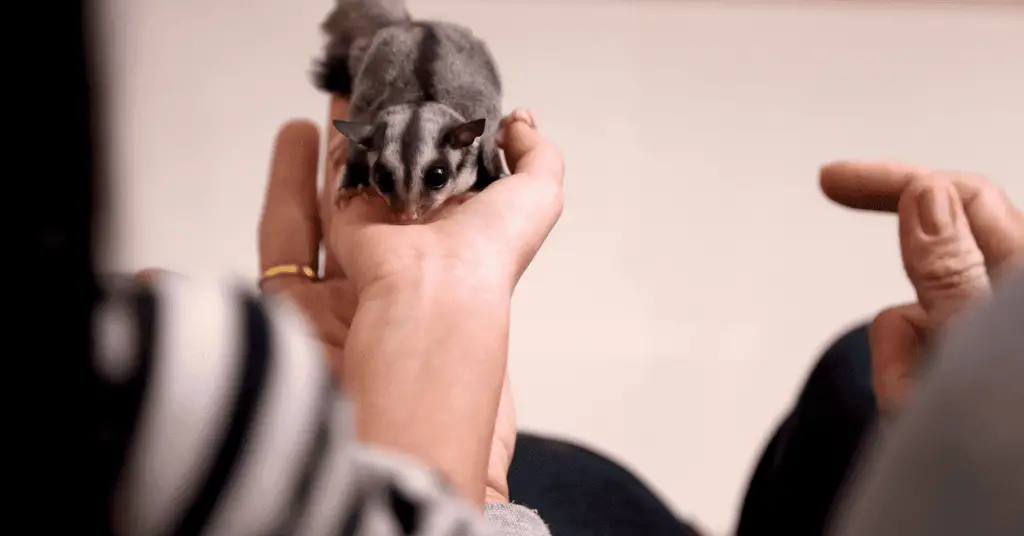
Shifting our attention to an equally important aspect, the health and hygiene of sugar gliders are fundamental to their overall well-being. Proper healthcare and cleanliness practices are crucial for maintaining a healthy pet.
Maintaining Sugar Glider Health
- Regular Veterinary Care: Routine check-ups with a vet experienced in exotic pets are essential. They can help in early detection and treatment of common health issues.
- Balanced Diet: As mentioned earlier, a balanced diet is vital for preventing nutritional deficiencies and supporting overall health.
- Exercise: Adequate exercise is necessary. Ensure their cage has enough space for movement and provide time outside the cage in a safe, glider-proofed area.
- Stress Management: Minimizing stress through a stable environment and regular social interaction is important for their mental health.
Hygiene Practices
- Cage Cleaning: Regular cleaning of their cage and accessories to prevent the buildup of waste and bacteria is essential.
- Self-Cleaning: Sugar gliders are generally clean animals and will groom themselves. Avoid using any harsh chemicals or soaps on them.
- Odor Control: While sugar gliders themselves are not particularly odorous, their cage can develop an odor if not maintained properly. Use safe, pet-friendly cleaning solutions.
For more insights into the hygiene aspects and addressing the common question, “Do Sugar Gliders Stink?,” visit Do Sugar Gliders Stink?. This resource offers detailed information on keeping your sugar glider and their environment clean and odor-free.
Ethical Considerations in Keeping Sugar Gliders
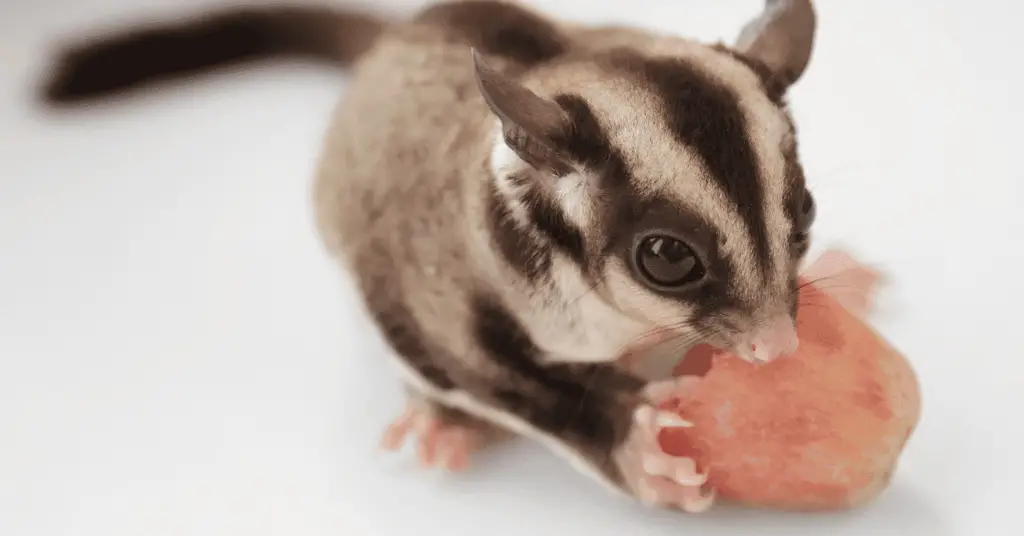
Now, it’s crucial to address the ethical considerations surrounding sugar gliders as pets. This topic involves a nuanced debate about the well-being and natural habitat of these unique animals.
The Debate on Keeping Sugar Gliders as Pets
- Wildlife Conservation: Sugar gliders are wild animals, and their suitability as domestic pets is debated. Issues include the impact of pet trade on wild populations and the ability of owners to replicate a natural environment.
- Complex Needs: These animals have complex dietary and social needs that can be challenging to meet in a household setting. Their nocturnal lifestyle and requirement for a spacious environment are often underestimated.
- Longevity and Commitment: Sugar gliders have a lifespan of 10-15 years in captivity, requiring a long-term commitment from owners.
- Legal and Ethical Breeding: Prospective owners should consider where their pet comes from. Ethical breeding practices and legality in certain regions are important factors.
- Rescue and Adoption: Adoption from shelters or rescues is an ethical consideration, as it provides a home for gliders who need one, rather than supporting the demand from breeders.
For a deeper exploration of this topic and to understand different viewpoints in the debate about the ethics of keeping sugar gliders as pets, visit Is It Cruel to Keep Sugar Gliders as Pets?. This resource will help you consider the moral implications and responsibilities involved in deciding to keep a sugar glider as a pet.
Legal Aspects of Owning Sugar Gliders
Additionally, it’s imperative for potential and current sugar glider owners to understand the legal aspects of owning these animals. The legality of keeping sugar gliders as pets varies widely depending on geographic location.
Understanding the Legalities
- Variation by Region: Laws regarding the ownership of sugar gliders differ significantly from one region to another. In some areas, they are completely legal, while in others, they are restricted or even banned.
- Permits and Regulations: In regions where sugar gliders are legal, owners may still be required to obtain permits. It’s crucial to check local wildlife and exotic pet regulations.
- California’s Laws: For instance, in California, the ownership of sugar gliders is subject to specific legal stipulations. Understanding these laws helps in ensuring compliance and avoiding legal issues.
- Import and Export Restrictions: There may also be laws governing the import and export of sugar gliders, aimed at protecting native ecosystems and the animals themselves.
- Ethical Breeding and Trade: Legal ownership also involves ensuring that the sugar glider was ethically bred and acquired, adhering to laws against illegal wildlife trade.
For specific information on the legal status of sugar gliders in California and more insights into the legal considerations of owning a sugar glider, visit Are Sugar Gliders Legal in California?. This resource provides essential details to help you navigate the legal landscape of sugar glider ownership.
Conclusion
In summarizing our comprehensive guide to sugar gliders, it’s clear that these charming marsupials require dedicated care and a deep understanding of their unique needs.
From their specialized dietary requirements to their nocturnal behaviors, owning a sugar glider is a significant commitment. Their ability to bond with humans adds a special dimension to the pet-owner relationship, but it also underscores the importance of regular interaction and social engagement for their mental well-being.
Legal and ethical considerations cannot be overlooked when deciding to welcome a sugar glider into your home.
The debate on the ethics of keeping sugar gliders, along with varying legal requirements in different regions, highlights the need for thorough research and responsible decision-making. Ultimately, providing a nurturing, safe, and enriching environment is key to the health and happiness of these fascinating creatures.

